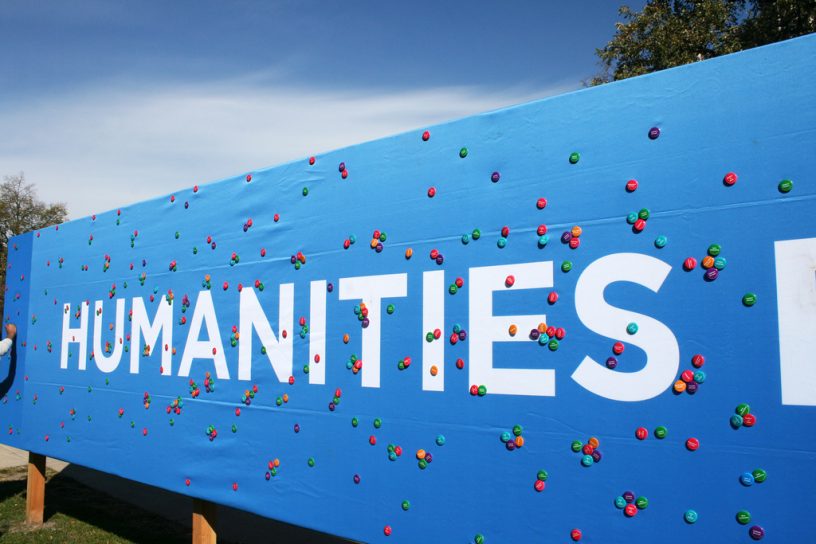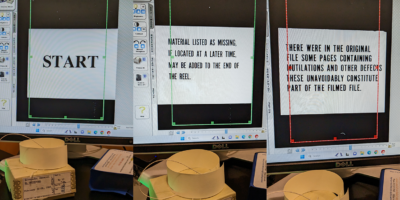By Elizabeth Alsop
Last Fall, I attended a talk by Kingsborough Community College professor Lourdes Follins, who presented her research on the experience of historically underrepresented faculty at CUNY’s community colleges. Her findings were illuminating, and often alarming. But one of the most memorable takeaways emerged from the Q&A, when an audience member asked Dr. Follins what advice she’d offer aspiring faculty. “Have multiple mentors,” she responded, adding that graduate students should have their “own personal board of directors” whose “only agenda is helping [them] excel.”
Doctoral education, of course, places a lot of emphasis on the advisor, but less on the importance of having advisors, plural. I thought about Follins’s recommendation last week, when the TLC and Futures Initiative co-hosted a panel discussion on “Teaching the Humanities at Community Colleges”: a discussion in which five experienced faculty members shared concrete, generous, and actionable advice, designed for GC students interested in teaching at CUNY’s two-year schools, but relevant to those across the disciplines, considering almost any type of faculty career. Much of the conversation echoed similarly thoughtful suggestions I’ve heard from the faculty participating in the CUNY Humanities Alliance this past year.
In the spirit of amplifying this good counsel—and transmitting it to a broader audience of potential mentees—I wanted to share some of what struck me as the evening’s most useful and important takeaways:
1) It’s not them—it’s you. If your students misconstrue an assignment, fail to grasp the finer points of your lecture, or under-perform on a test, consider whether the fault may lie with what you did, or didn’t, do. Was that deadline unrealistic? Did you presume too much prior knowledge? Ria Banerjee, Assistant Professor of English at Guttman Community College, noted that it was only after she began modeling the skill of note-taking for her students that they started to produce the kind of response papers she was seeking. Similarly, BMCC Assistant Professor of Sociology Soniya Munshi told the audience that teaching BMCC students—who are often both “full-time students and full-time other things”—had forced her to become a “super responsible communicator,” since working and care-giving leave many students little room for error, if a reading or assignment was posted late. Prithi Kanakamedala, an Assistant Professor of History at BCC, also picked up on the theme of accountability, and reminded the audience that key to teaching community college students—and, I’d argue, almost any student in an introductory or general education classroom—was to “check your privilege,” and remember that students have priorities beyond your scholarly agenda. And that’s OK! In fact, she suggested, it was an energizing challenge, one that taught you to “make yourself intelligible to people who may have zero interest in your research.” The lesson, echoed by Munshi, was that the process of preparing and delivering introductory courses could actually be more (rather than less) intellectually clarifying and satisfying .
2) Think strategically. Or as my own advisor counseled me when I accepted my first tenure-track job, “stay shrewd.” When it comes to the three main activities that comprise a tenure-track position—teaching, research, and service—panelists urged future faculty to be strategic when selecting and managing their commitments. Karen Miller, a Professor of History at LaGuardia, credited a combination of savvy and luck when it came to her own career, noting that she had benefited not only from her “maniacal interest in finding ways to get course releases,” but also from good fortune—in particular, the chance to coordinate the WAC program on her campus. Along similar lines, Leah Anderst, an Assistant Professor of English at Queensborough, suggested well-chosen service commitments could lead not only to valuable release time, but actually to new and unexpected avenues for research (as occurred when she and her colleague teamed up with a statistician to publish data they collected on their campus’s co-requisite model.) Finally, Banerjee reminded audiences of the value of “learning to say no, nicely.” The more you can find, and say “yes” to, service that aligns with your interests, the better positioned you’ll be to turn down assignments that don’t.
3) Separate rhetoric from reality. All five panelists alluded to misconceptions that they’ve encountered about community college students and faculty—whether in the media, among colleagues at other institutions, or even, among colleagues at their own institutions. Several of the faculty noted that this sense of alienation was generally highest when interacting with colleagues outside CUNY—including “conference buddies”—who often harbor assumptions about the teaching-load and lack of research support at community colleges that are both uninformed, and frequently wrong, especially considering the research expectations for full-time faculty at CUNY’s two-year schools. Munshi—who had always aspired to a community college career—described her own surprise when encountering this sort of snobbery, while Miller mentioned that publishing her book had done much to alleviate her own “status anxiety.”
Perhaps the most interesting observations, however, concerned the panelists’ response to perceptions of their campus’s students. Although several faculty described discrepancies between students they had taught at two- and four-year schools in terms of resources, access, and academic preparedness, they also downplayed their students’ uniqueness, with Miller challenging the rhetoric of “difference” altogether. “Students are just the same…no matter where you are,” she argued, suggesting that teaching was better conceived as a “pedagogical relationship” that transcends institution. It’s an argument that has surfaced previously within the CUNY Humanities Alliance, and which merits ongoing consideration. On the one hand, the very existence of the Alliance—and indeed, last week’s event—presume there is something distinctive about community college teaching. And yet, identifying and describing that difference—and taking care not to represent it as a categorical one—has been a persistent challenge.
Empirical data of the sort shared by Follins, and published in the recent work of CUNY Faculty members Maura Smale and Mariana Regalado, represents an invaluable resource for thinking rigorously about this and related questions. In what ways do CUNY’s community college students “differ” from those at the senior colleges (if at all)? Is it even possible to generalize, given the heterogeneity of community college student bodies? To what extent is the rhetoric about community college students shaped by institutional mandates, including fundraising efforts? Does that rhetoric—which often invokes poverty or disenfranchisement—risk pathologizing or distorting our understanding of the contemporary community college student? And finally, how might the answers to these questions inform our understanding of community college teaching, and the decisions we make in the classroom, including those around assignment design, digital technology, and assessment?
Elizabeth Alsop is the Assistant Director of the TLC and the Mellon Humanities Scholar of the CUNY Humanities Alliance.









2 Pingbacks